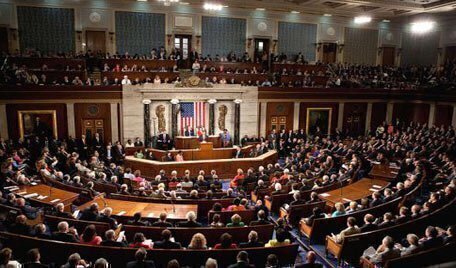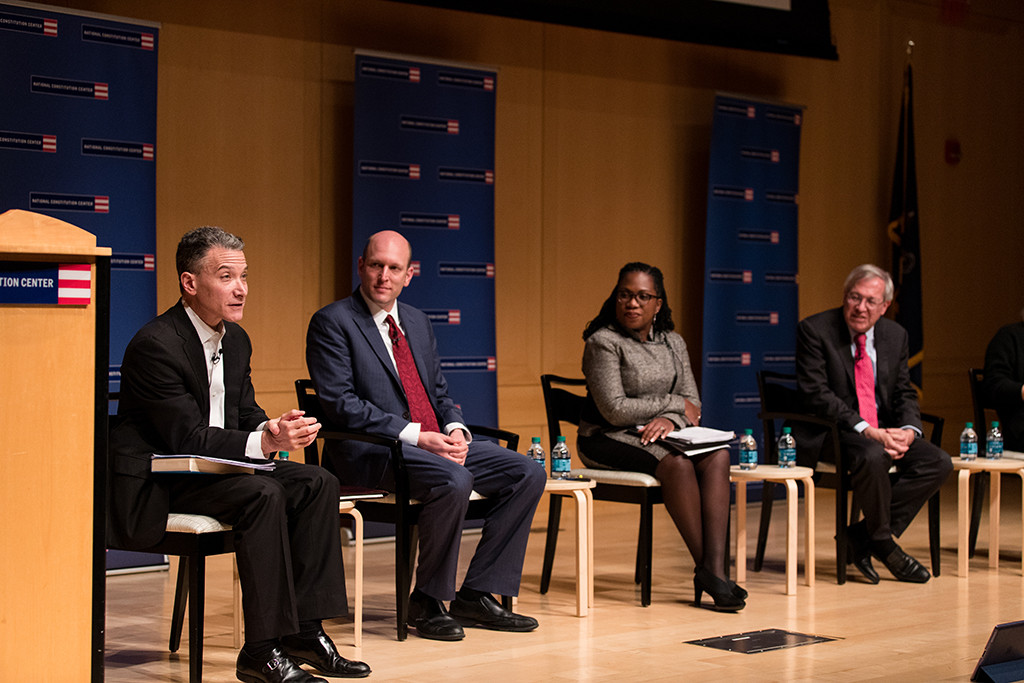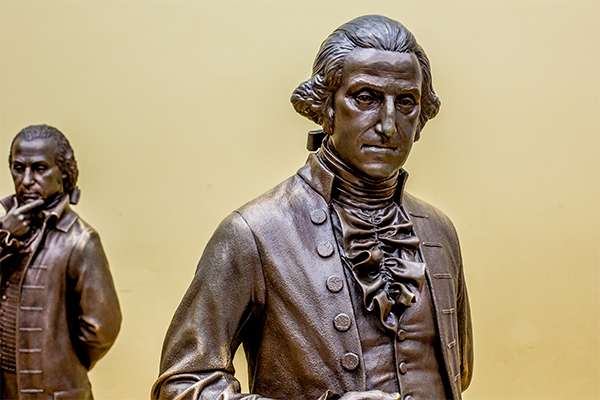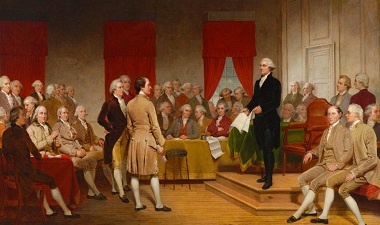Shortly after President Donald Trump took office, his administration briefly paused federal spending on various programs. Although that spending has been restored, the move led to questions about the separation of powers between the president and Congress.
 In a memorandum from the Office of Management and Budget (OMB), the office issued a directive to freeze spending allocated by Congress for billions of dollars of federal aid. The OMB rescinded the memo but also said it would continue to review federal spending programs.
In a memorandum from the Office of Management and Budget (OMB), the office issued a directive to freeze spending allocated by Congress for billions of dollars of federal aid. The OMB rescinded the memo but also said it would continue to review federal spending programs.
The process in which the president withholds or delays spending on programs authorized by Congress is called impoundment. This practice dates back to the third president, Thomas Jefferson, and it has at times been controversial because the impoundment of funds can put the executive and legislative branches in conflict.
The Constitution’s Article I, Section 9 grants Congress the power of the purse to approve spending in the federal budget in the Appropriations Clause, which reads in part, “No Money shall be drawn from the Treasury, but in Consequence of Appropriations made by Law.” The Constitution then delegates to the president the task of spending approved funds in the Take Care Clause, which requires the chief executive “shall take Care that the Laws be faithfully executed.”
The most noted example of a conflict over impoundment took place in the 1970s, when President Richard Nixon refused to spend funds on numerous programs approved by Congress. During public hearings on the matter in 1973, Nixon’s critics said the president was using his impoundment powers to effectively veto programs by cutting off their funds. “There has never been a more appropriate time than the present to take up this crucial constitutional question of the role of the Congress and its relationship with the executive and whether or not we have co-equal branches of Government,” said Sen. Hubert Humphrey.
President Nixon’s supporters believed that Nixon was managing funds in an inflationary environment using his Take Care powers. “The President's obligation to faithfully execute the laws plainly includes an obligation to prevent waste. Impounding to save the taxpayer’s dollar has always had the full support of the Congress,” argued Assistant Attorney General Joseph T. Sneed.
Congress passed the Congressional Budget and Impoundment Control Act of 1974 in response to the controversy. Title X in the act is commonly referred to as the Impoundment Control Act (or ICA), and it requires the president to report to Congress when he impounds funds as a deferment (or a temporary delay) or a recission (a permanent cancellation) of spending.
Under the ICA, spending deferrals must not extend beyond the current fiscal year, and Congress can override deferrals using an expedited process. For recissions, the president must propose such actions to Congress for approval, and he can delay spending-related to recissions for 45 days. Unless Congress approves the recission request, the funds must be released for spending.
The Supreme Court considered the impoundment question in Train v. City of New York (1975) after the ICA was passed. The city sued after it did not receive funds allocated to it under the Federal Water Pollution Control Act Amendments. President Nixon had vetoed the bill, but Congress overrode the veto. Nixon then reduced program spending. In his unanimous opinion, Justice Byron White wrote that “the sole issue before us is whether the 1972 Act permits the Administrator to allot to the States under § 205(a) less than the entire amounts authorized to be appropriated by § 207. We hold that the Act does not permit such action, and affirm the Court of Appeals.”
Another effort to give the president more flexibility in controlling how funds allocated by Congress are spent was the Line Item Veto Act of 1996. The act amended the ICA “to authorize the President to cancel in whole any dollar amount of discretionary budget authority, any item of new direct spending, or any limited tax benefit signed into law.” Such moves required certain conditions, including reducing the federal budget deficit and not impairing “essential Government functions” or causing “harm” to “the national interest.” Congress could override a spending cancellation by the president using an expedited process.
President Bill Clinton used the line-item veto 82 times during its brief existence, with Congress restoring 39 appropriations. In Clinton v. City of New York, the Supreme Court struck down the line-item veto in a 6-3 decision. President Clinton had cancelled sections of the Balanced Budget Act of 1997 and the Taxpayer Relief Act of 1997.
Writing for the majority, Justice John Paul Stevens said under the Constitution’s Presentment Clause in Article I, Section 7, the president must approve or reject a bill as presented to him by Congress.
“Article I procedures governing statutory enactment were the product of the great debates and compromises that produced the Constitution itself. Familiar historical materials provide abundant support for the conclusion that the power to enact statutes may only ‘be exercised in accord with a single, finely wrought and exhaustively considered, procedure,’ wrote Stevens, citing a prior Court decision in INS v. Chadha (1983). “There is no provision in the Constitution that authorizes the President to enact, to amend, or to repeal statutes,” he concluded.
Justice Stephen Breyer, joined by Justices Sandra Day O’Connor and Antonin Scalia, believed the Line Item Veto Act was constitutional. “The Act represents a legislative effort to provide the President with the power to give effect to some, but not to all, of the expenditure and revenue-diminishing provisions contained in a single massive appropriations bill. And this objective is constitutionally proper,” Breyer stated. He also cited the Court’s landmark decision in Youngstown Sheet & Tube v. Sawyer (1952) as supporting his argument: “Presidential powers are not fixed but fluctuate, depending on their disjunction or conjunction with those of Congress ... [and when] the President acts pursuant to an express or implied authorization of Congress, his authority is at its maximum.”
In recent years, the first Trump administration and the Biden administration faced questions when spending on certain programs was paused, including delays related spending in Ukraine and on the border wall. Today, as the OMB continues to review federal spending programs, more questions about the roles of Congress and the president in the spending process are likely to occur.
Scott Bomboy is the editor in chief of the National Constitution Center.







